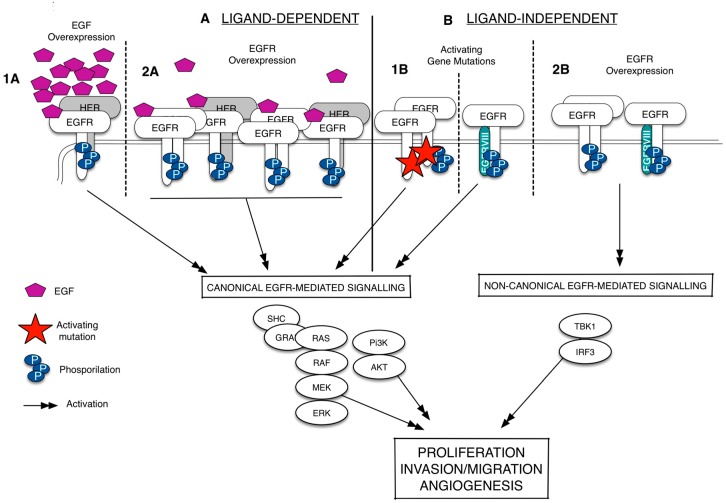Figure 1.
Epidermal growth factor receptor (EGFR) signaling deregulation in cancer. The EGFR signaling can be deregulated in a ligand-dependent (A) or ligand-independent manner (B). The ligand-specific activation of the wild-type epidermal growth factor receptor (EGFRwt), which occurs via EGF overexpression (1A) or EGFR overexpression (1B), leads to the EGFR homodimerization/heterodimerization, phosphorylation of specific tyrosine residues and recruitment of several proteins at the intracellular portion of the receptors. It activates a series of signal transduction pathways (black arrows), including the canonical signals as such as ERK and Akt. The ligand-independent activation happens when the EGFR shows activating gene mutations. These mutations can occur in the EGFR intracellular domain or in the EGFR extracellular domain to form a constitutively active protein (EGFRvIII) (1B). Without ligand, the EGFRwt overexpression can also lead to the EGFR phosphorylation and the activation of a non-canonical form of signaling that results in the activation of the transcription factor IRF3 (2B). Dash lines separates the different mechanisms of EGFR activation.

